I bought ten MSI GTX 750 TI cards for a bargain price from a decent computer recycling store on eBay. Four of the cards appear to work fine and the six that don’t all have seemingly different faults, which hopefully makes for an interesting deep-dive on repairing this fairly modest version of the classic GTX 750 TI. Having several working versions to compare/measure should hopefully help fix any circuit-related issues.
PCB overview and analysis of components
TODO Photos of PCB overview and analysis of components
| Voltage Rail | Expected Resistance | Expected Voltage (running) |
|---|---|---|
| Vcore | 8.8-13.3Ω | TODO add idle and run voltages |
| Vmem | ~475Ω (Elpida), ~50Ω (Samsung) | 1.5V |
| PEX | 250-660Ω | 1V |
| 5V | 824Ω | 5V |
| 3.3V | 8.42KΩ | 3.3V |
| 12V (PCI) | 2.4KΩ | 12V |
PEX Circuit
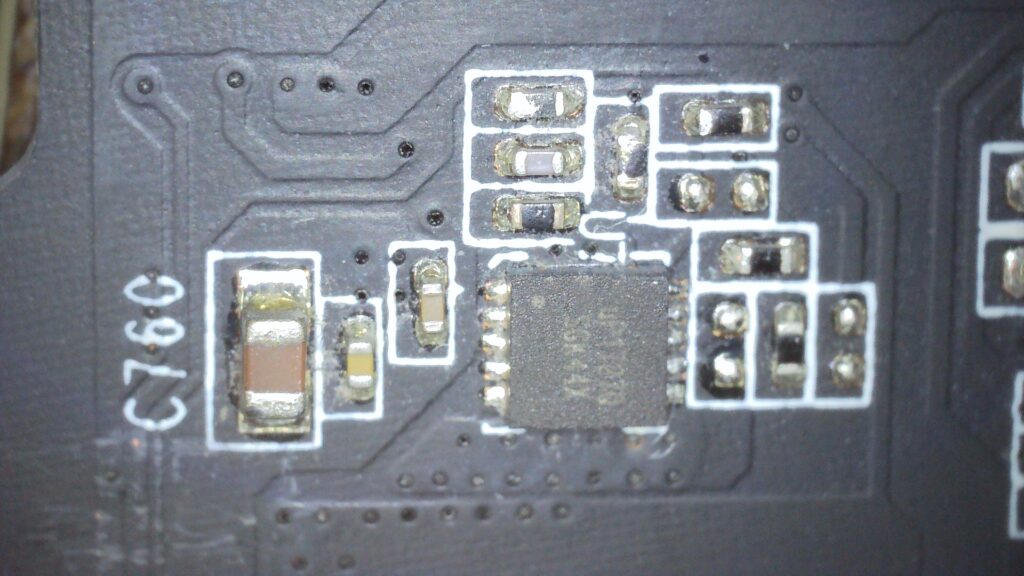
PEX Buck Converter uP1727Q https://pdf1.alldatasheet.com/datasheet-pdf/view/1113877/UPI/UP1727Q.html
5V Circuit
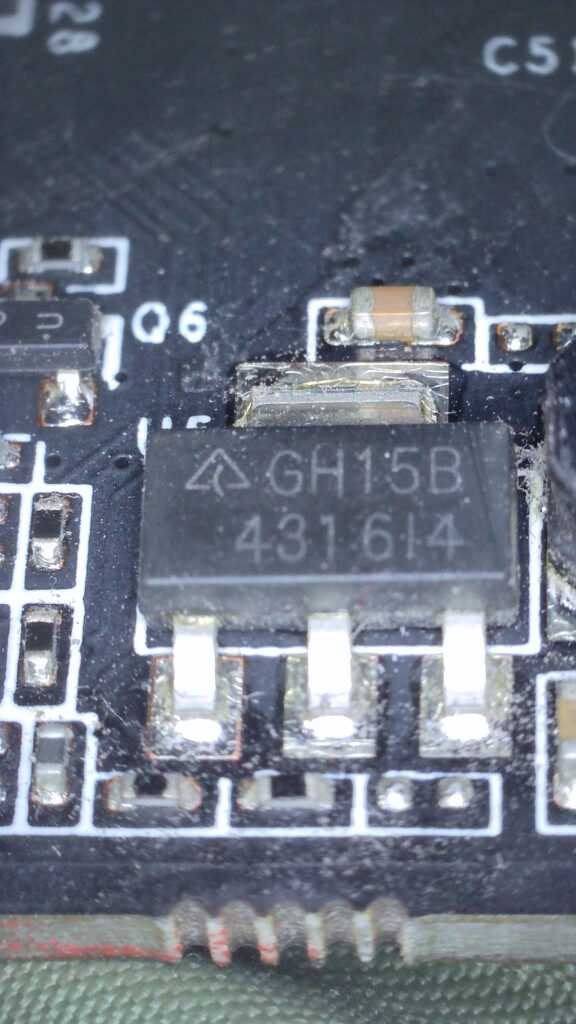
LDO is GH15B or the BCD AZ1117C https://pdf1.alldatasheet.com/datasheet-pdf/view/453750/BCDSEMI/GH15B.html
This is adjusted to 5V using a resistor divider connected to the left-most leg.
TODO Summary of cards and issues seen
- The general condition of the cards was good in all but one which had physical damage to it.
- All the cards have their warranty stickers intact.
- 2 Phase VCore VRM, desktop card really.
Card A – Working
TODO Test more
Card B – Working
TODO Test more
Card C – Faulty, not detected, no PEX
Resistances are normal. PEX voltage missing.
TODO investigate PEX circuit
Card D – Faulty, 5V rail only 1.29V and many smashed components (FIXED, IN TEST)
Observations
- Main resistances are normal
- 5V rail is missing
- PEX is also missing as a result, 5V probably enables it.
- The adjust pin on the 5V regulator only has 0.04V, should be 3.9V. The adjust voltage should be set by a resistor divider.
Normally, I might suspect the 5V regulator could be faulty. Possibly the resistor divider could be faulty, if a resistor has risen in value, causing the adjust voltage to be drastically low. However, please see my discovery below on the second inspection, how could I miss it!
Lot’s of damage to explain the problems!
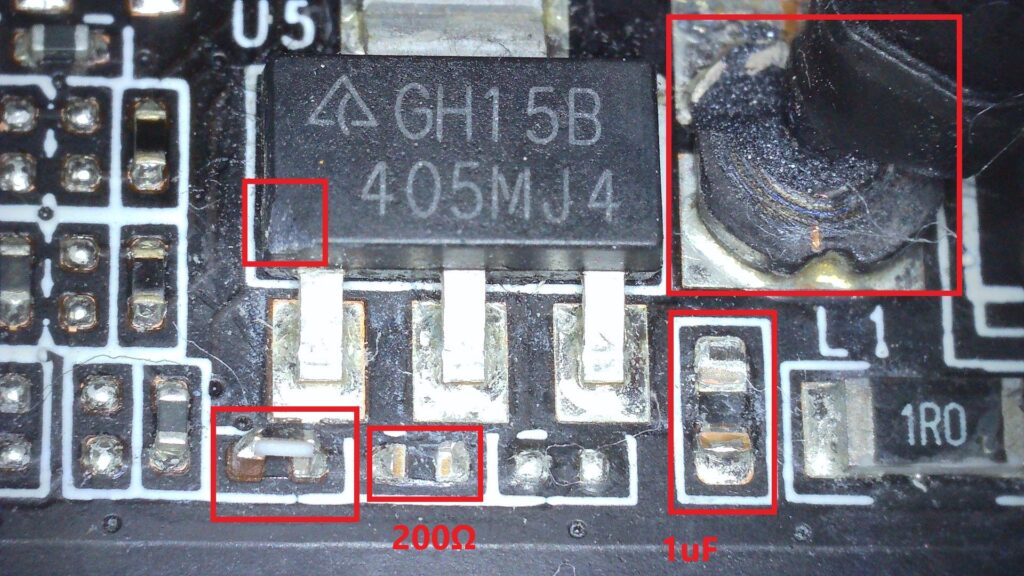
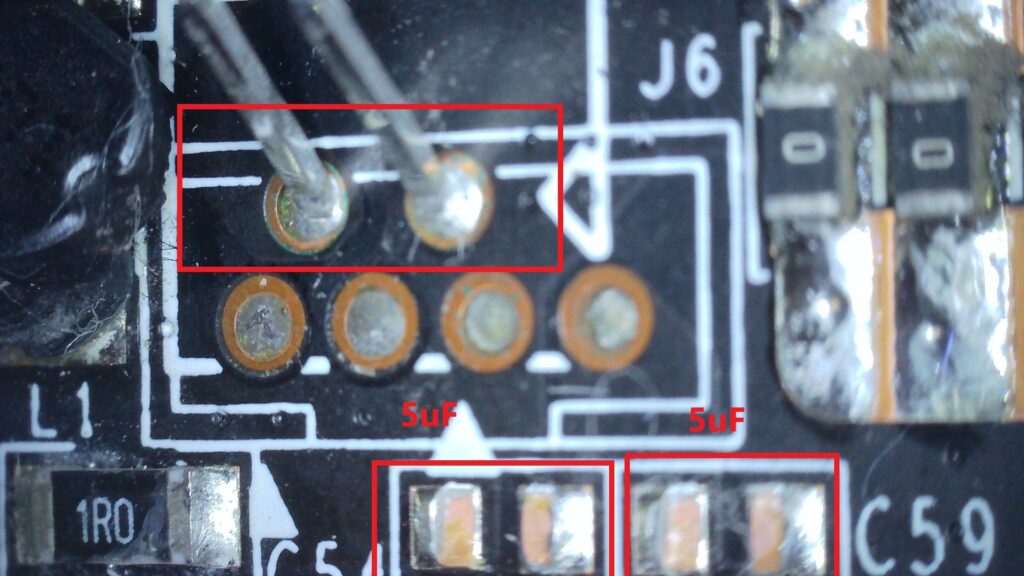
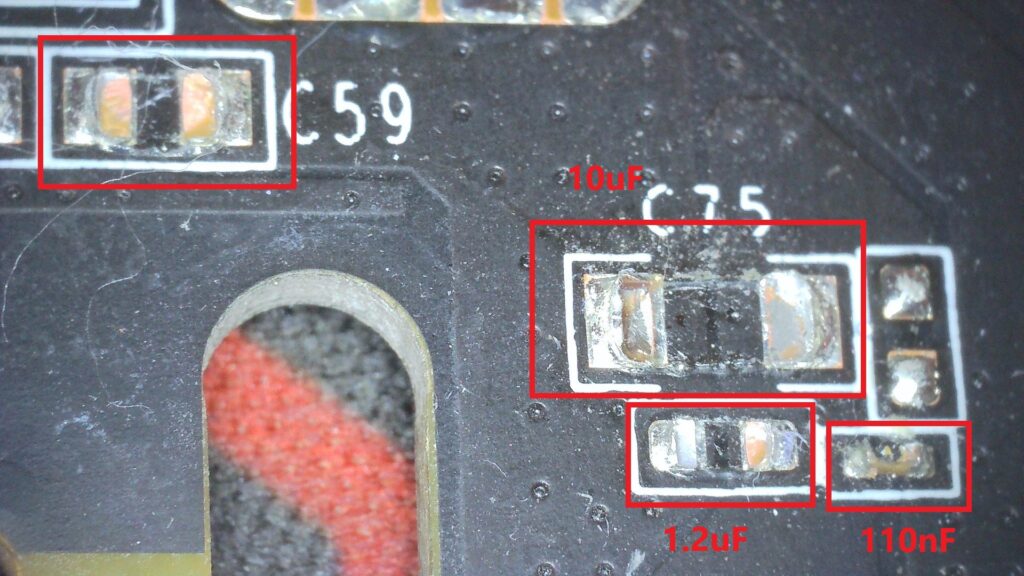
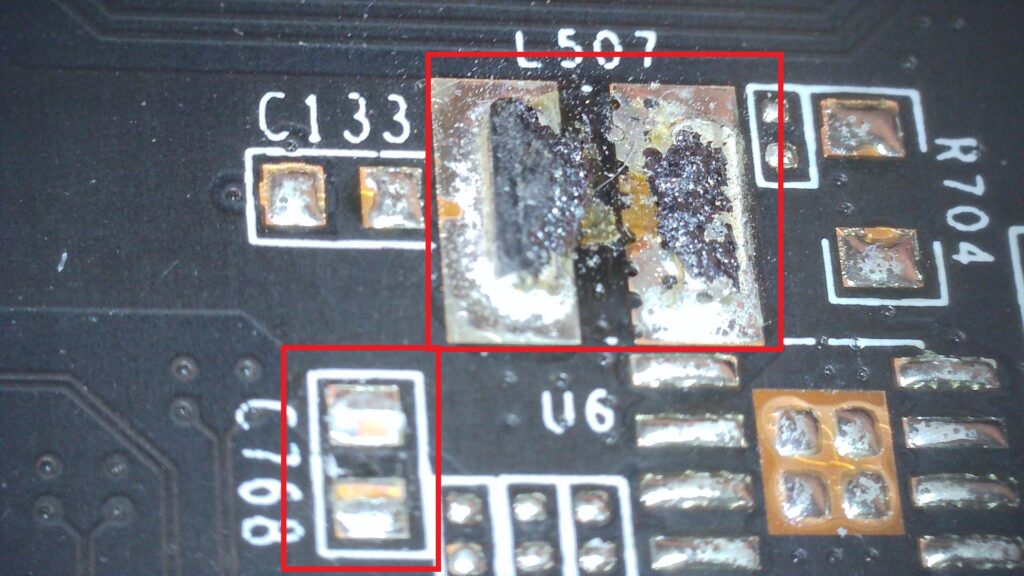
I guess I didn’t bother inspecting the front of the card, as the cooler was on and all appeared normal at first glance. Well… no damn wonder the 5V and PEX voltages are missing, and so are the inductors and other related components! Strangely the back of the card seems ok. Guess somebody very clumsy tried to jam this little card in the PCI slot!
Repair Attempt
Well, I am hoping that once the damaged components are replaced that the missing voltage rails are all that’s wrong. Normally, I might not bother trying to fix this much damage to this type of card, but in this case, I hopefully have two advantages
- An identical card that can become a doner – I will choose Card E below, as I would rather try to fix missing components and voltage rails than sporadic crashing.
- A working identical card to check against
Ok, so I’ll first need to clean the pads and remove the debris of the damaged components. Hopefully, the pads will be ok. I’ll do this with hot air (375°C) and some preheating from below to help remove those smashed inductor remains.
All came off pretty cleanly – good. I took components from a donor card and replaced all the missing ones.
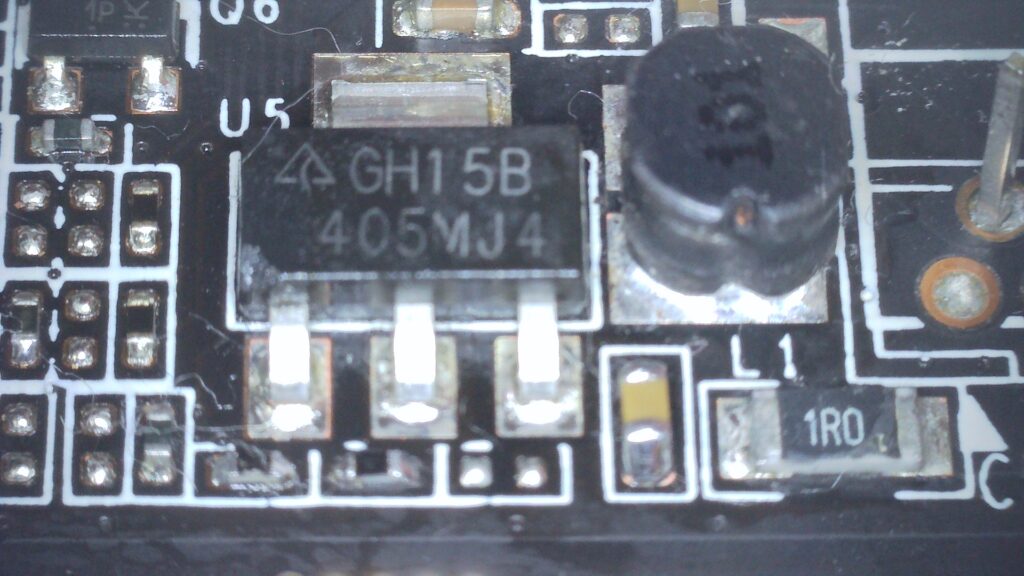
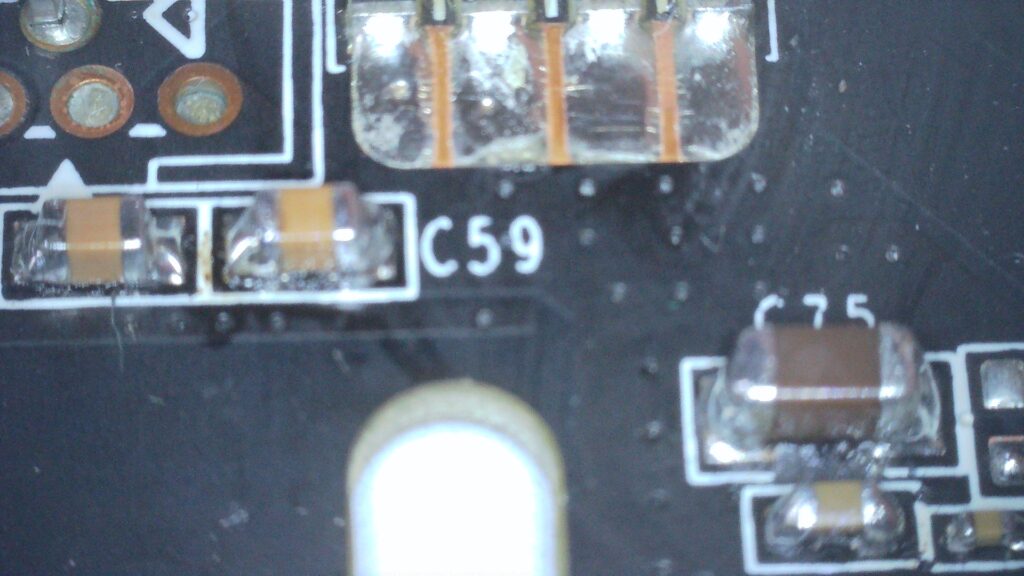
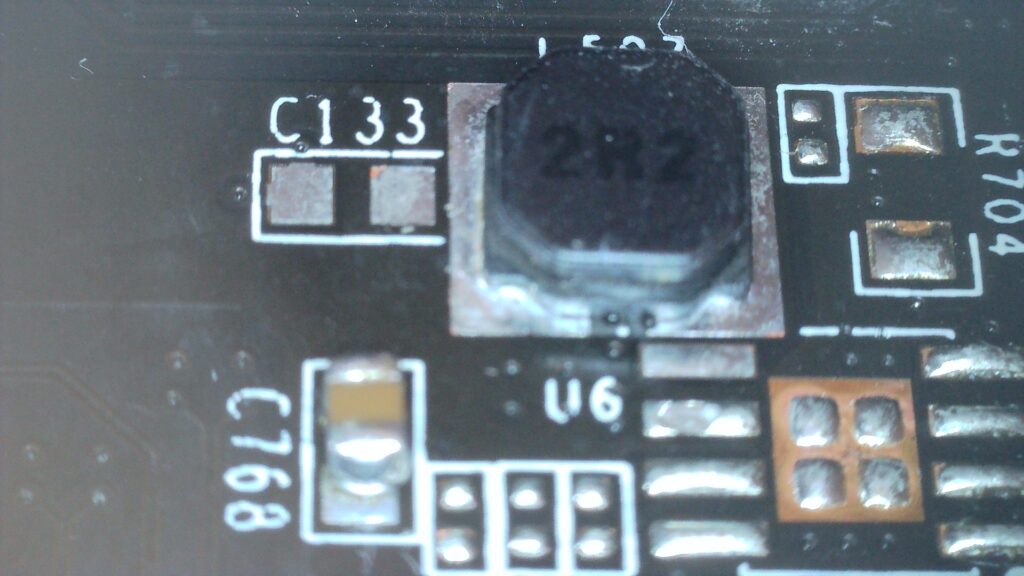
Resistances all seem good, so onto the testing – fingers crossed for no other issues.
Testing
- OK great, picture – will take that.
- Drivers load – better
- The render test in GPUZ is stable – great!
- Kombuster HD benchmark – passes, excellent!
- Will test more, but hopefully the first stable fix from the faulty cards 🙂
Card E – Faulty, has physical damage and crashing (MADE DONOR)
Interestingly, the 12V rail resistance is 1M+, should be 2.4KΩ. All other resistances appear fine.
Observations:
- The card has relatively shallow scratches on the back of the card, exposing some copper traces
- One VRAM capacitor is missing
- Fan blades missing
- Desktop usage seems stable
- Crashes with load, sometimes recoverable
- Idle VDDV in GPU-Z is 0.962V which seems high
- VRel and VOp limits show, could well be VRM/power delivery issues causing the crashing.
In order to make faster progress with some of the other cards with clearer faults, I am going to make this card a donor, as it appears in the worst shape out of the faulty cards here.
Card F – Faulty, when first measured, the 12V rail was in short at 3.6Ω, now it isn’t, but slides! (PART FIXED, now crashes under load)
This card is the most mysterious, I don’t like 12V rail shorts that magically disappear! Now, when measuring the 12V rail, the reading seems to start about normal ~2.4KΩ, the gradually decreases to an unstable 1700Ω. I am not sure what this indicates, perhaps a failing MOSFET that starts to leak? On brief power-on, the VMem rail is very low (all others appear fine) and the core seems to get hot quite quick. It would be fine if this card turned out to be scrap, then I could use it’s parts to fix up the others, but I ideally want to prove what’s wrong with it first before stripping it.
Investigating the VMem circuit
The VMem PWM is a uP1542Q https://pdf1.alldatasheet.com/datasheet-pdf/view/1115964/UPI/UP1542QSU8.html
I could see a very low looking 1.5V on the VCC pin. Some probing around the pin revealed a resistor with 12V on one end and 1.5V on the other, which often indicates a resistor that has dramatically risen in value. I think the proper value should be 2.2Ω and it should read 12V on both ends for the correct VCC.
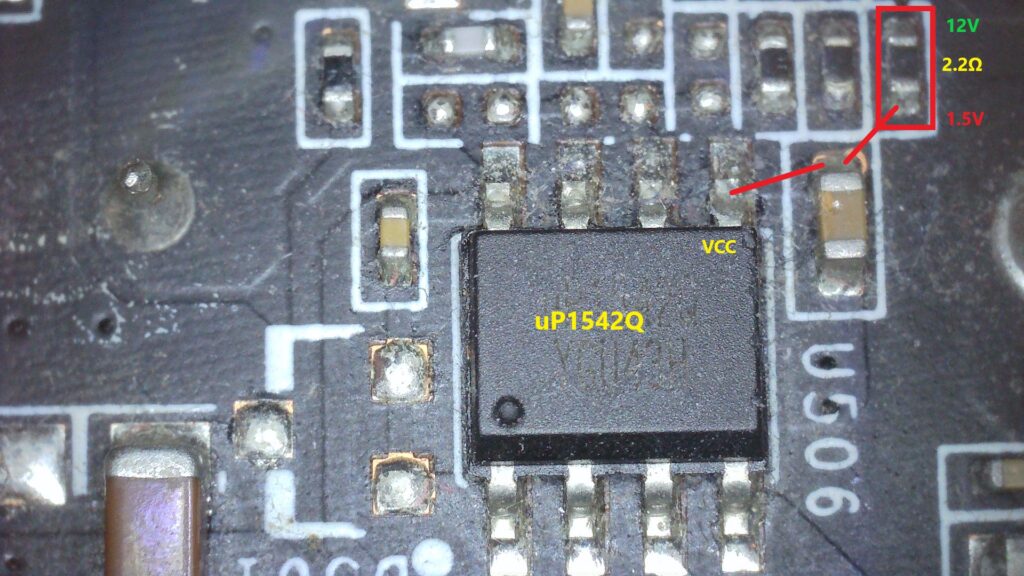
I’m not sure this is the only problem, but I will try replacing the seemingly faulty resistor.
Hmm.. after replacing the resistor, the 12V rail resistance has now fallen further. I think there is some factor here that I am going to struggle to isolate. I even tried removing and replacing the PWM (U506), but this did not change the resistance.
Ok, I risked a quick power on test, and there is still only 1V on the other side of that VCC resistor, how can this be? I guess the regulator …. or maybe the capacitor is faulty? Wait, removing the capacitor has restored the resistance to the proper 2.4K!
Fixed or as fixed as it’s going to be:
- Replaced the 1uF capacitor
- Picture, drivers load, takes some stress
- However… there is what appears to be coil whine and soft (recoverable) crashes seem to occur under stress
But, I’ll take it! I’m am still really happy to take the learnings, I really didn’t think I’d track down that variable 12V rail resistance. I had a distant hunch it might be capacitor related (due to the sliding resistance measurement), but I had no idea which one.
I am not sure I can make this card sellable with th remaining faults and I am still tempted to use this card as spares, as this might help fix a couple of the other faulty cards.
Card G – Working
Tested more and sold.
Card H – Working
Tested more and sold.
CARD I – Artefacts
Aftefacts even on the BIOS screen, crashes on driver load. MATS reveals A1 is faulty, appears to be all bits (hard to see with artefacts).
TODO The chip is … Elpida XXX
I replaced the faulty A1 chip with a re-balled chip from one of the other donor cards.
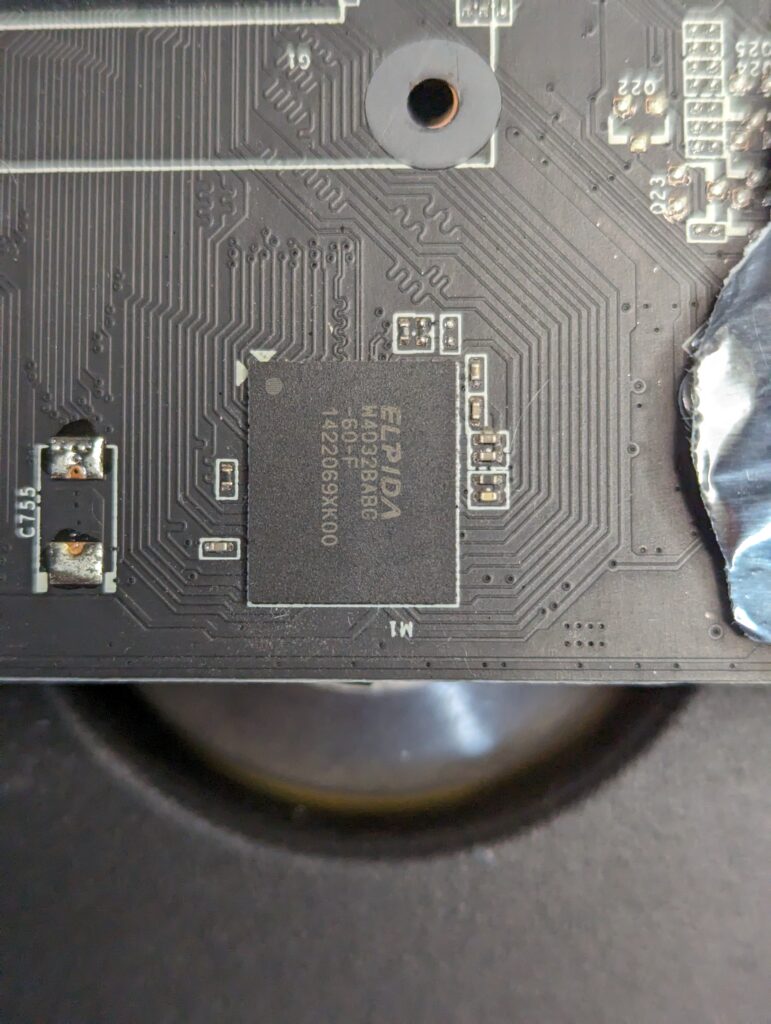
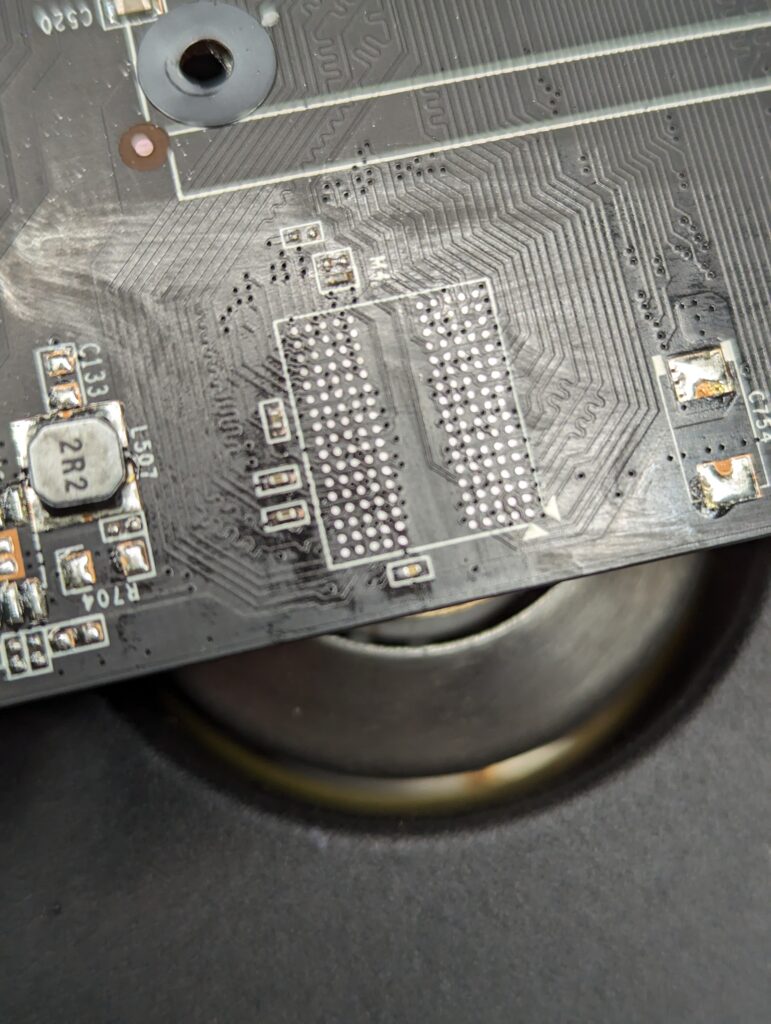
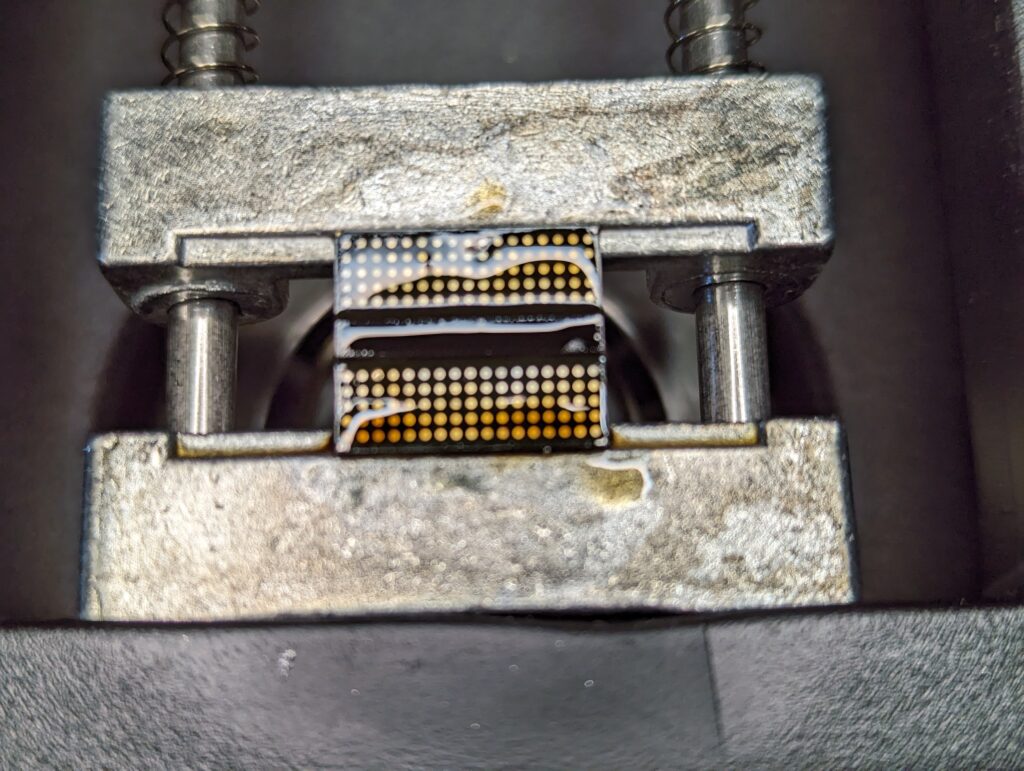

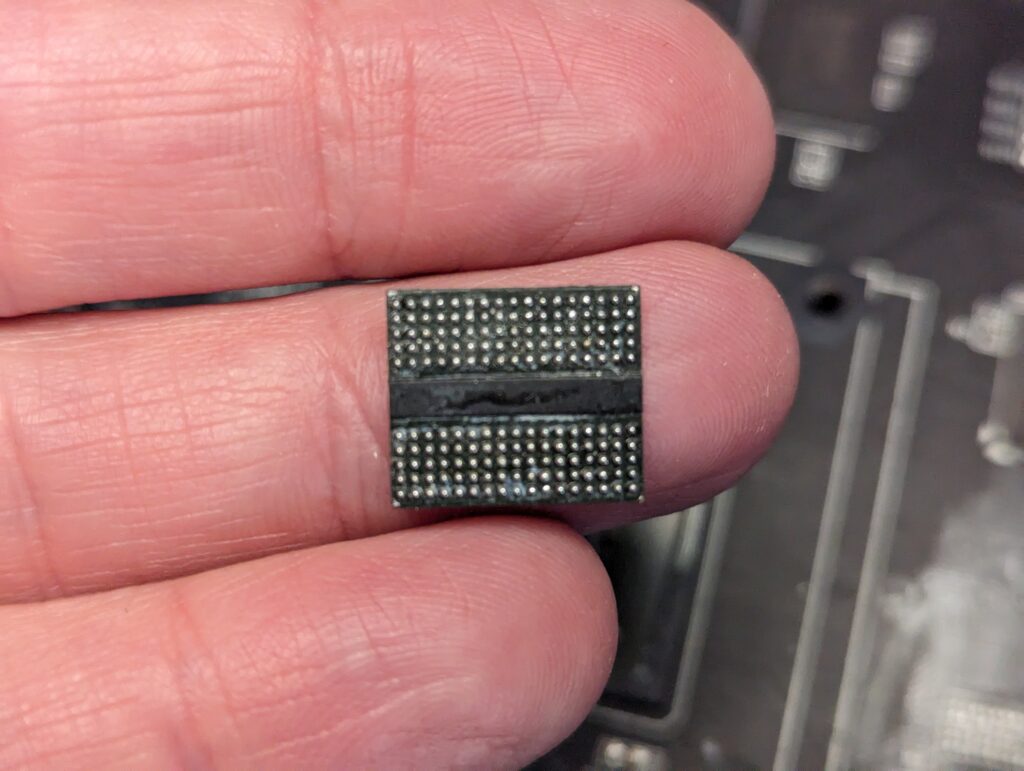
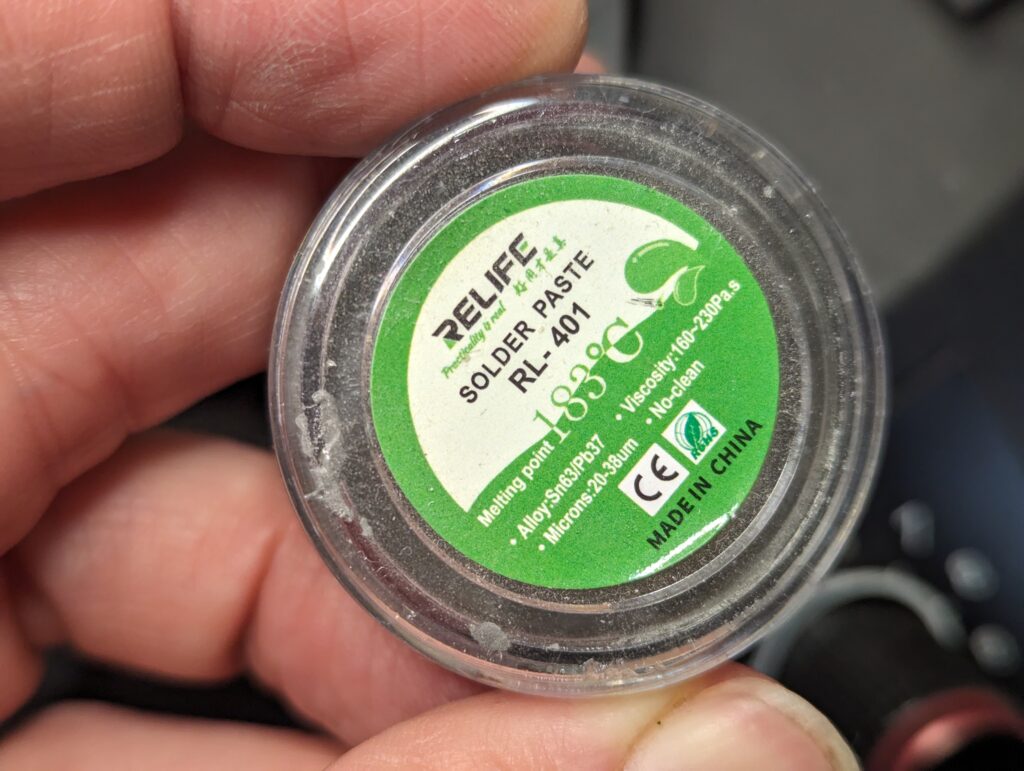
Take VMem measurement
Following the replacement of the failing VRAM chip, the artefacts remain and MATs continue to show errors on A1:
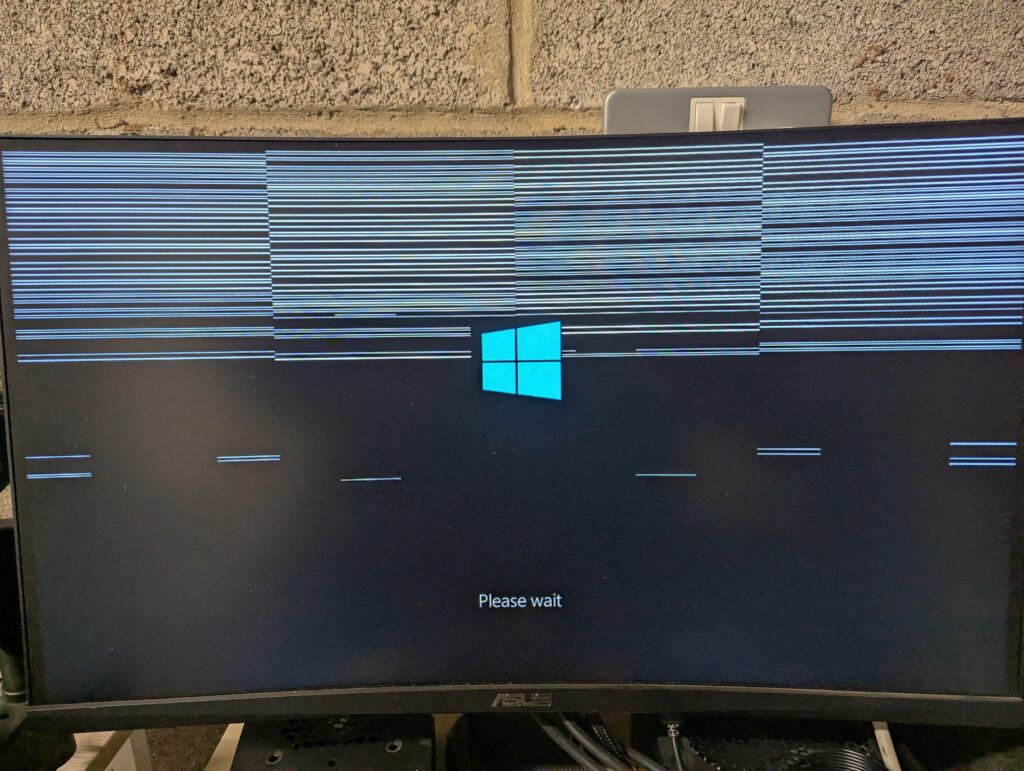
Ah! There is actually trace damage behind the suspect A1 VRAM, one of the damaged traces leads to A1, one to another VRAM chip. There is no continuity on the trace across the damaged area, so they are definitely broken:
TODO add pic
Well, this could well have been the issue all along (Oh! well, I need practice re-balling, as I normally just buy chips! :-)). I’ll look to repair the damaged traces and retest.

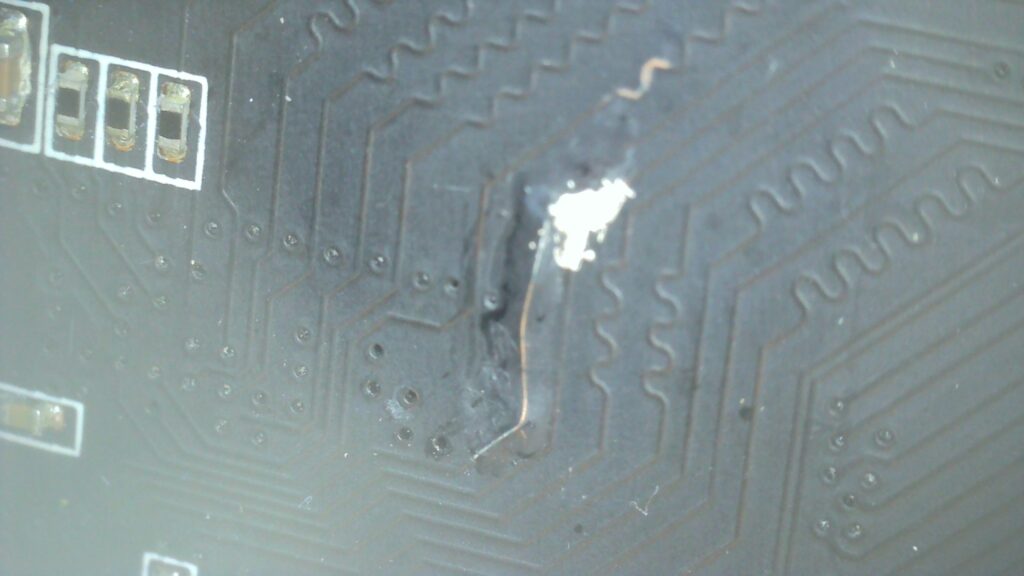
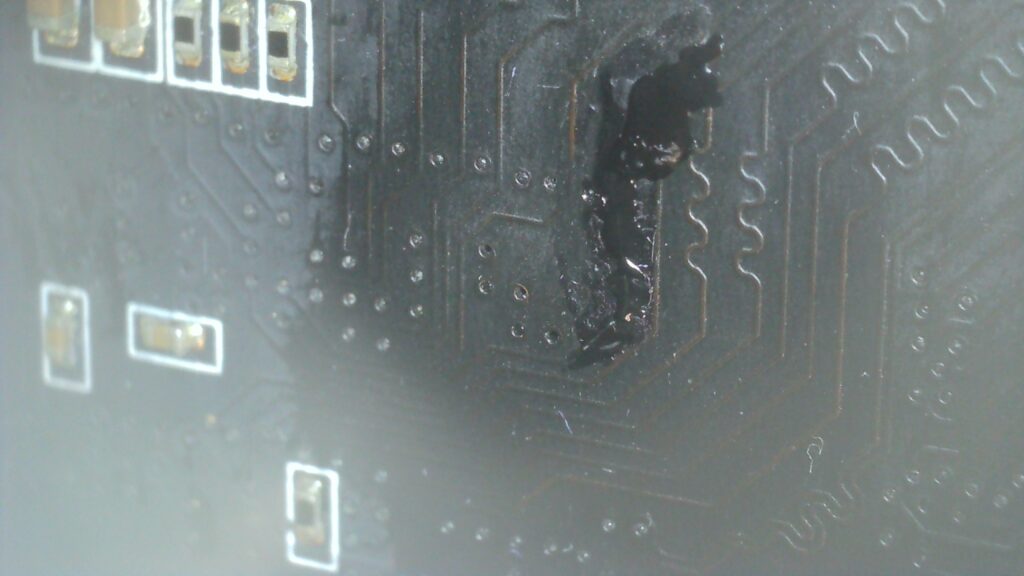
Card J – Crashes under load
Resistances all appear normal.
Observations:
- Drivers load
- GPU-Z render test can crash, Kombuster crashes (recoverable, caps lock working)
- MATS passes
- MVDDQ is always 0V (TODO double check other cards)
Possibly VMem rail related, investigate VMem VRM